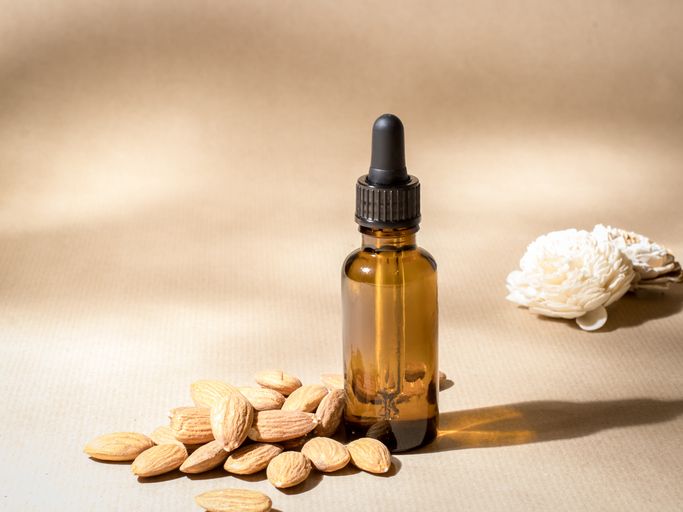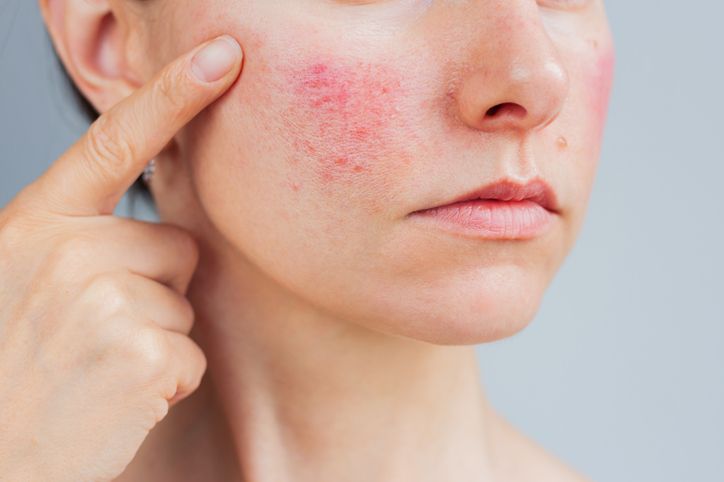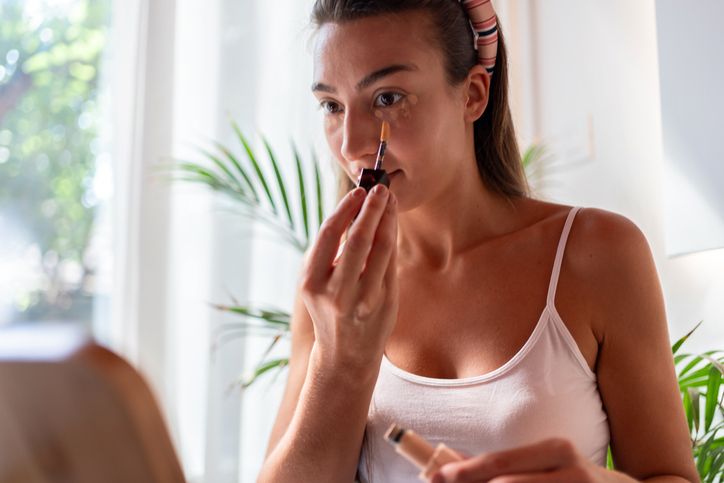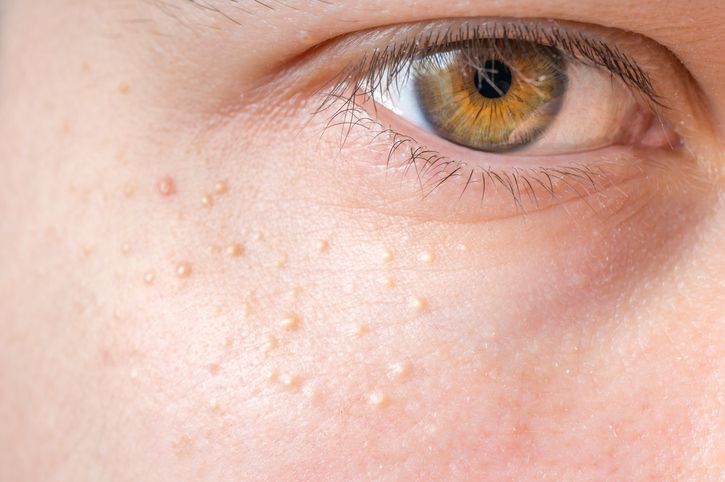- Home
- Trend
- Weight Loss Strategies
- Acne Tips
- Hair Health Information
- Blemish Removal Tips
- Acne Scar Removal Tips
- Muscle Building Techniques
- Intimate Care Tips
- Postpartum Intimate Care
- Eye Bags Wiki
- Tips for Face Slimming
- Secret of Permanent Hair Removal
- Breast Enlargement Tips
- Cure to Snoring
- Marionette Lines
- Skin-Tightening Secrets
Frontal hair thinning often creeps up unnoticed. Many women only realize it when a large portion of their hairline has already receded and their forehead appears significantly higher. This can eventually develop into the dreaded "M-shaped hairline"—and if left unchecked, full-blown balding. You might feel like you’ve done nothing to harm your hair, so why is it getting thinner?
Frontal hair loss is actually a very common issue. With the right care and early intervention, it's absolutely possible to rescue your hair. Let’s explore the symptoms, causes, and best solutions for this condition.
What is Frontal Hair Loss?

Frontal hair loss refers to the gradual thinning of hair around the front of the scalp, particularly near the hairline. Over time, this causes the hairline to recede, giving the illusion of a larger forehead. Not only is this aesthetically unflattering, but it can also make women look older than they actually are.
A common misconception is that having a high forehead means you’re experiencing hair loss—but the two aren't always related. So how do you know if you're truly dealing with frontal hair thinning?
In Japan, one benchmark is the distance between the eyebrows and the hairline: if it's over 7 cm, this may indicate a receding hairline. If you notice your forehead getting noticeably higher, it’s worth paying attention—your hair may already be thinning significantly.
Common Signs of Frontal Hair Thinning
Wondering if you’re experiencing frontal hair loss? Besides checking in the mirror, women with this issue often notice accompanying scalp and hair concerns. Here are some telltale signs:
• Hair around the forehead becoming increasingly sparse
• More visible scalp near the front hairline
• Baby hairs or fine hairs becoming dry, brittle, or prone to breakage
• Hairline receding slowly but noticeably
What Causes Frontal Hair Loss in Women?
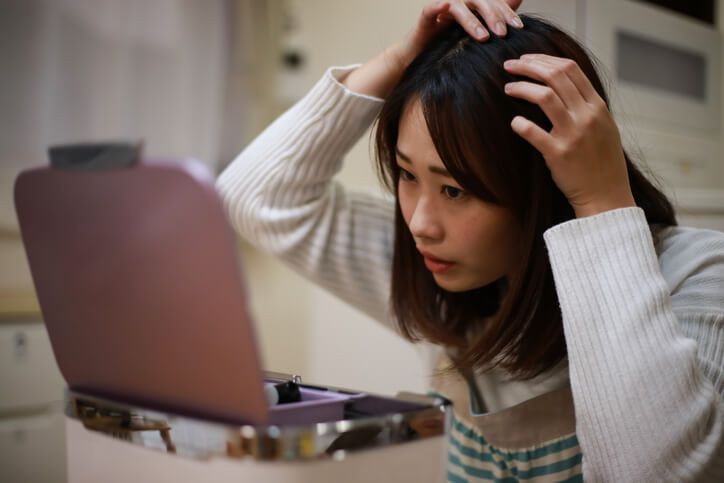
There are many reasons why hair around the front of your scalp may start thinning. Damage to the hair follicles can block nutrient absorption from the scalp, causing the follicles to shrink and stop producing healthy hair. If left untreated, this condition can spread toward the crown—and may eventually result in baldness.
Common Triggers of Frontal Hair Loss:
1. Frequent Hair Styling & Coloring
Tight ponytails, buns, and repeated dyeing or bleaching can severely damage hair. Pulling hair back tightly stresses the delicate front strands, accelerating thinning. Hair dyes and chemical treatments may also harm hair follicles, leading to breakage and increased hair loss.
2. Lack of Sleep
During sleep, the body repairs damaged hair cells and produces growth hormones essential for healthy hair. Poor sleep interferes with this process, slowing down growth and weakening the hair.
3. Stress
Chronic stress narrows blood vessels and tightens the arrector pili muscles in the scalp, which hinders nutrient delivery to hair follicles. This results in finer, weaker hair that eventually falls out.
4. Poor Diet
Hair needs proper nutrition to thrive. Crash diets or avoiding carbs and protein can push hair into the resting phase prematurely. Protein, iron, zinc, and vitamins are all crucial for strong, healthy hair.
5. Genetics
Hereditary factors play a role too. If your family has a history of hair thinning or baldness, you may be more prone to it. While female pattern hair loss differs from male pattern baldness, it can still cause thinning—particularly in the frontal area.
6. Hormonal Changes
Hormonal shifts after childbirth can trigger frontal hair loss. During pregnancy, elevated estrogen keeps hair in the growth phase longer, giving the illusion of thicker hair. After delivery, hormone levels normalize, pushing hair into the shedding phase. Menopause can also cause follicle shrinkage due to reduced estrogen.
免費體驗
F8 Hair Regrowth Treatment
1 Minute Self-Registration
Date should not be before minimal date
How to Improve Frontal Hair Loss
Caught early, frontal hair thinning can often be reversed or slowed down—sometimes without medical intervention. Here are some lifestyle tweaks and habits that can help:
1. Reduce Styling Stress
Give your hair a break. Avoid excessive dyeing and chemical treatments. Alternate hairstyles to avoid constantly pulling on the same area, which can damage hair roots.
2. Add More Protein to Your Diet
Hair is primarily made of protein. Incorporate high-protein foods like salmon, eggs, and dairy into your meals. Also eat iron-rich foods like beef, sesame seeds, and red beans to boost blood circulation and nutrient delivery to the scalp.
3. Use the Right Shampoo
The wrong shampoo can worsen hair thinning. For example, overly rich formulas on oily scalps can clog pores. Choose shampoos with gentle, natural ingredients like ginger or botanical extracts that support hair health and scalp balance.
4. Massage the Scalp Daily
Scalp massages stimulate blood flow and help follicles absorb nutrients and oxygen. Gently massage your scalp before bedtime to promote healthier hair growth.
Try These Hair-Growth-Boosting Acupressure Points
In traditional Chinese medicine (TCM), stimulating certain acupoints can enhance circulation and hair growth. Here are five effective ones:
1. Fengchi (GB20)
Located at the center of the back of the head, this point promotes scalp blood flow and helps regulate the nervous system.
2. Jiaosun (TE20)
Found in the hollow above the ear, parallel to the ear tip. Stimulates circulation, nourishes hair, and enhances shine.
3. Yifeng (SJ17)
Behind the earlobe. Massaging this point improves blood flow and can also relieve headaches and eye strain.
4. Taichong (LV3)
On the top of the foot, just below the big toe. Helps calm stress and regulate menstrual issues—both linked to hair loss.
5. Taixi (KI3)
Located on the inner ankle. In TCM, kidney health is tied to hair vitality. Stimulating this point supports kidney qi and boosts hair strength.
Flattering Hairstyles for Frontal Hair Thinning
Frontal hair loss doesn’t mean you have to give up on stylish looks! The right hairstyle can help you work with what you’ve got:
1. Airy Bangs (Korean See-Through Fringe)
These wispy bangs lightly cover the forehead, making thinning less noticeable while creating a youthful, soft look.
2. Side Part Instead of Center Part
A center part can emphasize sparse front hair and flatten the overall look. A deep side part adds volume and disguises thinning areas.
3. Blow-Dry Hair Upside Down
After washing your hair, try blow-drying against the direction of growth. This lifts the roots and adds volume, making your hair appear fuller.
4. Stick to Darker Hair Colors
If you must dye your hair, go with darker shades. Light colors tend to make hair look thinner, while dark hues give the illusion of density. Natural black or dark brown are your safest bets.
免費體驗
F8 Hair Regrowth Treatment
1 Minute Self-Registration
Date should not be before minimal date
Eat Your Way to Healthier Hair: Best Foods for Frontal Hair Loss
Nutrition plays a big role in hair health. These superfoods can help combat frontal thinning:
1. Deep-Sea Fish
Salmon and mackerel are rich in omega-3s and high-quality protein. These nutrients strengthen hair, restore shine, and support scalp health.
2. Avocados
Packed with vitamins A, D, E, B6, and protein, avocados nourish follicles and encourage new hair growth.
3. Eggs
Eggs are full of B vitamins, essential for hair growth and scalp care. A simple, affordable way to boost hair health!
4. Black-Colored Foods (TCM Diet Therapy)
In Chinese medicine, black foods like black sesame, black beans, and black rice are believed to nourish the kidneys—key to strong, healthy hair.
Advanced Treatment: Perfect Medical F8 Hair Regrowth Treatment
If lifestyle changes and dietary tweaks aren't enough, it may be time to seek professional help. The Perfect Medical F8 Hair Regrowth Treatment offers a non-invasive, clinical-grade solution to frontal hair loss.
This treatment uses medical-grade low-level laser therapy (LLLT) to penetrate and activate hair follicles at the root, stimulate blood circulation, and accelerate cell regeneration (ATP synthesis). The goal: rejuvenate follicles and restore thick, healthy hair.
Three Core Steps of the F8 Hair Regrowth Program:
• Nourish: Deep-cleanse the scalp and remove buildup and residue.
• Revitalize: Use LLLT to introduce potent hair-nourishing agents and boost follicle vitality.
• Regrow: Apply concentrated growth serums to awaken stem cells and regenerate scalp tissues.
It’s safe, non-surgical, and requires no downtime. The 650nm LLLT is clinically proven, 100% pain-free, and ideal for busy women. You can go back to work or school immediately after each session.
Perfect Medical currently offers a free trial of the F8 treatment—sign up via the link below to experience it firsthand!
Get Trial Today: Perfect Medical F8 Hair Regrowth Treatment免費體驗
F8 Hair Regrowth Treatment
1 Minute Self-Registration
Date should not be before minimal date
FAQ

Why does frontal hair loss occur?
There are several common reasons: Frequent hair styling and chemical treatments: Regular use of heat tools or tight hairstyles like ponytails can stress the front hairline. Constant pulling can damage the delicate baby hairs near the forehead, making them more prone to breakage and fall-out. Hair coloring and perms: Chemical ingredients used in dyes and perms can damage the scalp and hair follicles, accelerating hair loss—especially around the front of the scalp. Poor sleep habits: The body produces growth hormones during sleep, which are essential for healthy hair. Without enough rest, hair may not grow properly or get the nourishment it needs. Unbalanced diet: Women who diet excessively—for example, eating only vegetables while cutting out rice and protein—may develop nutritional deficiencies. Without enough nutrients, hair can enter the resting phase early and start shedding. Genetics: Hereditary factors play a big role. If your parents or grandparents experienced hair thinning, especially around the hairline, you may be genetically predisposed to it as well.
What are some hairstyle tips for women with frontal hair thinning?
Here are some styling ideas to help disguise thinning and enhance your look: Try airy bangs (see-through fringe): This trendy style lightly covers the forehead, adding softness while hiding sparse areas near the hairline. Go for darker hair colors: Deep shades like dark brown or natural black give the illusion of thicker hair. Avoid light dyes, which may make your hair look thinner. Avoid center parts: A middle part tends to emphasize sparse front hair and can flatten the sides. This makes hair look even thinner. Opt for a deep side part: This adds volume and helps conceal thinner spots near the hairline. Blow-dry strategically: After shampooing, try blow-drying your hair against the direction of growth to lift the roots. This creates a fuller, more voluminous look and prevents the hair from appearing limp or flat.
Are there any acupressure points that help with hair loss?
Yes! Massaging the following pressure points regularly can help: Fengchi (GB20), Jiaosun (TE20), and Yifeng (SJ17): These points stimulate scalp blood circulation, nourish hair follicles, and promote healthy hair growth. Yifeng in particular is also great for relieving headaches and eye strain—common issues for people who spend long hours on screens. Massaging these acupoints boosts nutrient delivery to the scalp, adds shine, and can help prevent further hair loss.
What foods help improve frontal hair loss?
Here are some top picks: Deep-sea fish (like salmon and mackerel): Rich in omega-3 fatty acids and high-quality protein, which nourish the scalp and strengthen hair. Fish oil also adds shine and protects natural color. Avocados: Packed with vitamins A, D, E, B6, and protein. They support follicle function and encourage new hair growth. Dark-colored foods (from TCM perspective): In Chinese medicine, black foods like black rice, black beans, and black sesame are believed to nourish the kidneys—which are linked to hair health. A strong kidney system helps your hair grow thicker and healthier.
What’s an effective treatment for regrowing hair around the hairline?
The Perfect Medical F8 Hair Regrowth Treatment is a popular, clinically proven option that focuses on three key steps: Nourish, Revitalize, and Regrow. Nourish: Deep-cleanses the scalp, removes buildup, and purifies hair follicles. Revitalize: Uses medical-grade low-level laser therapy (LLLT) to deliver potent nutrients directly into the scalp, reactivating dormant follicles. Regrow: Applies concentrated growth serums to stimulate stem cells and regenerate scalp cells—ultimately improving scalp health and increasing hair density. Unlike hair transplants, this treatment is non-invasive and requires no downtime. It’s completely pain-free, with 650nm LLLT technology that’s proven to promote regrowth effectively. You can return to work or school immediately after your session, making it ideal for busy women.






